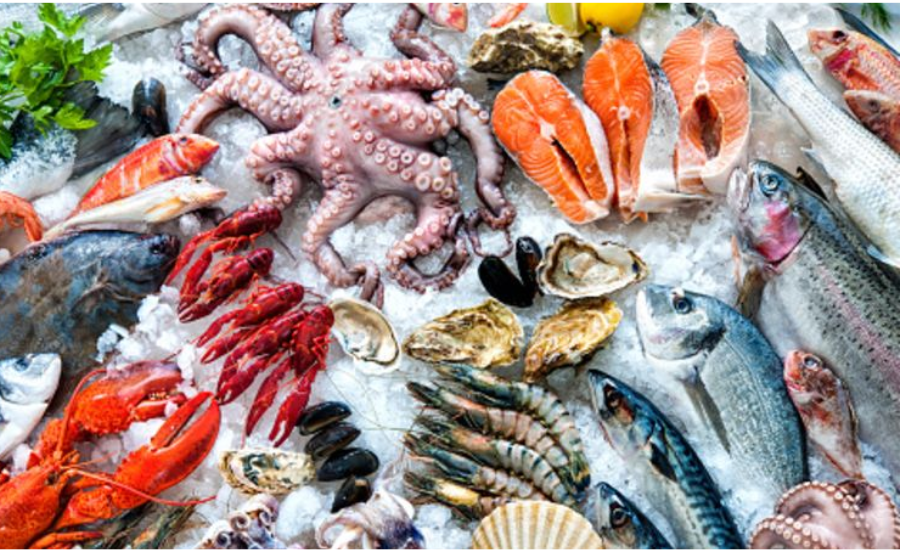The seafood industry stands at a critical juncture where tradition meets the pressing need for sustainability. In the modern era, the industry has expanded into a vast global network, encompassing everything from the catch to the consumer.
Branding, particularly through a seafood company logo, plays a pivotal role in signaling a commitment to sustainable practices. An AI-generated logo can serve as a powerful emblem of this dedication, encapsulating a brand’s ethos and its promise of sustainability in a single glance. Logos can convey a narrative of eco-friendly fishing methods, adherence to rigorous standards, and a forward-thinking approach to preserving marine life.
The shift towards eco-consciousness in seafood branding isn’t just a trend; it’s a necessary evolution. In this article, we’ll explore five key strategies that can help seafood brands navigate the tides of change and position themselves as leaders in the vital quest for sustainability.
5 Strategies for Sustainable Seafood Branding
Here are some useful strategies to showcase sustainable practices in seafood branding, particularly with the tone of voice, brand colors, and of course, logo elements.
1. Identifying Your Seafood Brand’s Audience
Knowing who you’re selling to is crucial for your seafood business. Are your buyers’ local folks or visitors? Do they mostly consist of men, women, or a mix? Understanding whether your customers prefer uncooked seafood to take home or enjoy on-the-spot cooked meals can shape your marketing approach.
Your business stands out for a reason—what is it? This unique edge, your value proposition, should be at the heart of your communication. It’s what draws customers to you instead of elsewhere.
Consider the problems you solve. Maybe you offer the freshest local seafood, promoting healthy eating for families. Or perhaps you’re the go-to for other businesses looking for quality seafood at honest prices. Recognize these points and make sure your customers do too.
2. Crafting Your Seafood Brand’s Visual Identity
Once you understand who your seafood brand is for and what makes it special, it’s time to create a look that fits. Your logo, colors, fonts, and tagline should all tell your story and be on every piece of marketing you have. This keeps everything looking the same and professional.
Having a website is good for any seafood business, whether you catch fish, sell them, or cook them. Your website should be easy for people to use and tell them clearly what you want them to do, like order fish or book a table.
To stand out, keep making new content that will attract new customers and keep the old ones interested. Share articles, recipes, or videos that your customers will find useful and enjoyable. This will make people think of your brand for seafood before any other.
3. Enhancing Visibility with SEO and Local Listings
To get noticed online, use Search Engine Optimization (SEO). Most people start with a search, so appear where they look. Use keywords that match what people search for and link your website to relevant places.
For local seafood spots, it’s key to be on Google My Business and similar sites. If you need more eyes on your business, try paid ads on Google or social media. Share appealing food photos on platforms like Instagram to draw people in.
Remember, an email newsletter can bring more sales than other methods. Keep your current customers happy too; they’re valuable to hold onto.
4. Smart Marketing Moves for Seafood Success
In digital marketing, tools like Google Analytics let you see what’s working. It shows how people react to your online efforts. Keep doing what brings customers to your seafood business.
Sometimes, what works can be missed, so always check your data. If something isn’t bringing results, don’t be afraid to change it. Maybe Instagram isn’t right for you; it’s okay to try new content or a different platform.
The key is to focus on strategies that attract customers and not waste time on what doesn’t. This way, you can invest more in the successful tactics that help your business grow.
5. Securing Sustainability Credentials with MSC Certification
The Marine Stewardship Council (MSC) leads the world in certifying sustainable seafood. With the World Wildlife Fund reporting that 7% of global seafood comes from MSC-certified sources, getting this certification helps fisheries prove they care about the environment.
As people become more eco-aware, they look for brands they can trust to be sustainable. Also, seafood that’s caught in a way that’s good for the planet often sells for more, showing it’s high-quality and lets buyers eat without feeling bad about harming the environment.
Getting a green business certification along with MSCs is a smart move. It helps a company show exactly how it’s getting better at being green. Online badges from places like the Green Business Bureau can make customers and partners trust and respect a company more.
Conclusion
These are some of the most effective strategies to showcase sustainability in seafood branding. If you are looking to establish a name in this industry, start by focusing on building trust and showing how you are making a difference with sustainable practices.
Stay in touch for more updates and alerts visit: Chicago Heading!

